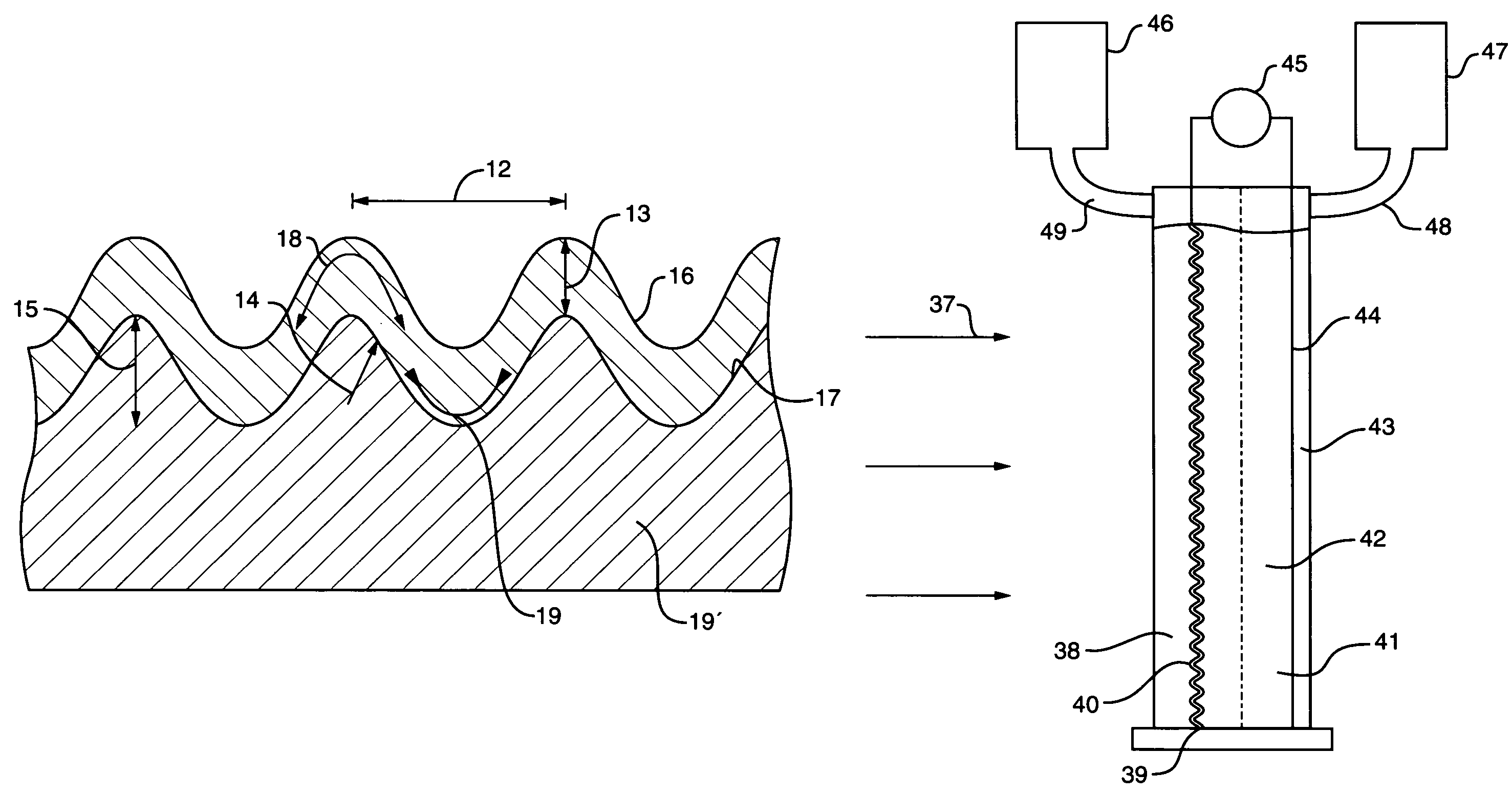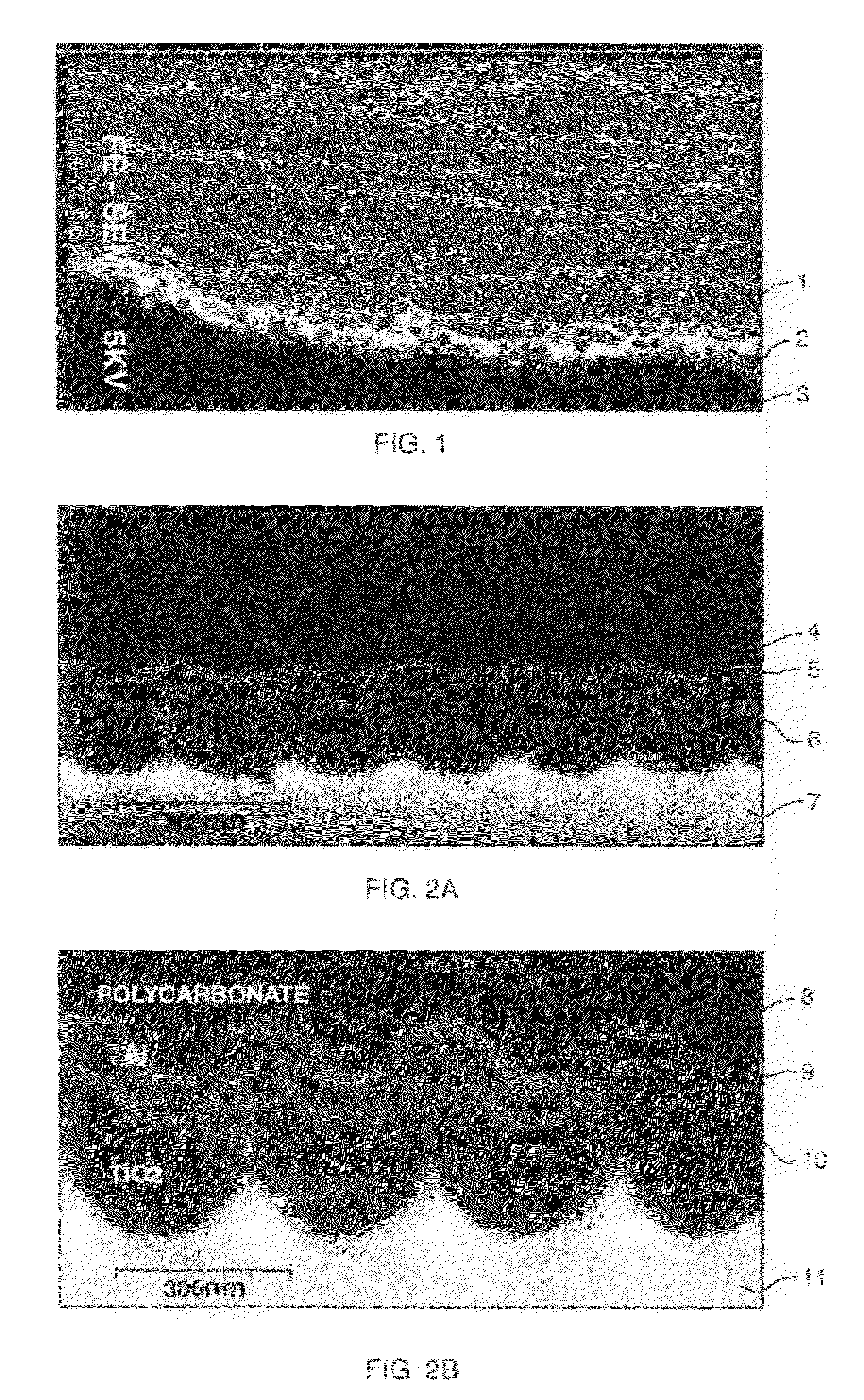Stress-induced bandgap-shifted semiconductor photoelectrolytic/photocatalytic/photovoltaic surface and method for making same
a photovoltaic surface, photocatalytic technology, applied in the field of photocatalytic surfaces, can solve the problems of high stress, pollution of land and oceans, pollution of pv power plants, etc., and achieve the effects of high stress, better matched, and high efficiency
- Summary
- Abstract
- Description
- Claims
- Application Information
AI Technical Summary
Benefits of technology
Problems solved by technology
Method used
Image
Examples
Embodiment Construction
[0102]It is known that the bandgap of a semiconductor can be altered by (1) doping, (2) adding stress, and (3) adding heat. Herein, I disclose making use of the stress that is inherent in thin films, and specifically the tensile stress, to shift the bandgap of a semiconductor further into the visible spectrum. Bandgap-shift from local heating from self-focusing of the illuminant in the film is also disclosed as contributing to the effect, but this appears to be a secondary effect in this invention. For example, the energy bandgap of GaAs, or gallium arsenide, requires a 900° C. change in temperature to drop only 0.4 eV, from 1.5 eV at 100° C. down to 1.1 eV at 1000° C. On the other hand, significantly higher magnitude changes in stress can be achieved in this invention, and so stress is the predominant factor in the lowering of the bandgap energy.
[0103]When tensile stress is applied to or caused in a semiconductor, the inter-atomic spacing increases directly. An increased inter-atom...
PUM
| Property | Measurement | Unit |
|---|---|---|
| threshold energy | aaaaa | aaaaa |
| energy gap | aaaaa | aaaaa |
| photoelectrolysis quantum efficiency | aaaaa | aaaaa |
Abstract
Description
Claims
Application Information
 Login to View More
Login to View More - R&D
- Intellectual Property
- Life Sciences
- Materials
- Tech Scout
- Unparalleled Data Quality
- Higher Quality Content
- 60% Fewer Hallucinations
Browse by: Latest US Patents, China's latest patents, Technical Efficacy Thesaurus, Application Domain, Technology Topic, Popular Technical Reports.
© 2025 PatSnap. All rights reserved.Legal|Privacy policy|Modern Slavery Act Transparency Statement|Sitemap|About US| Contact US: help@patsnap.com



